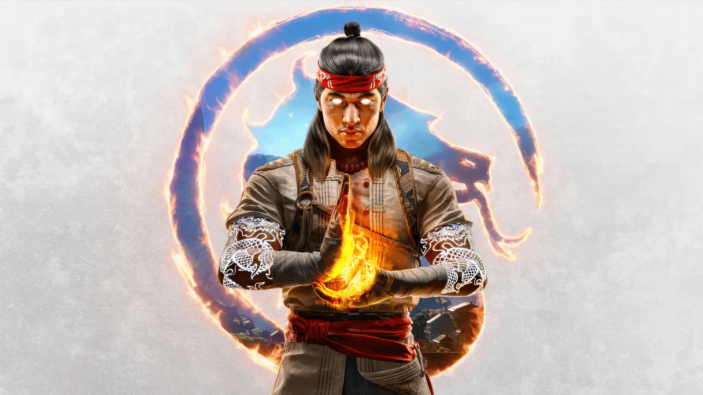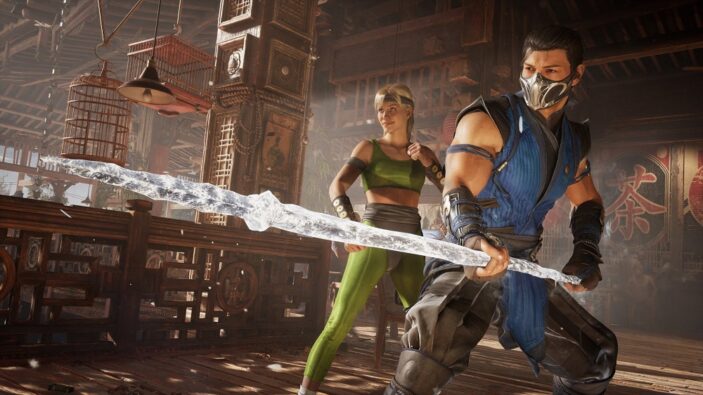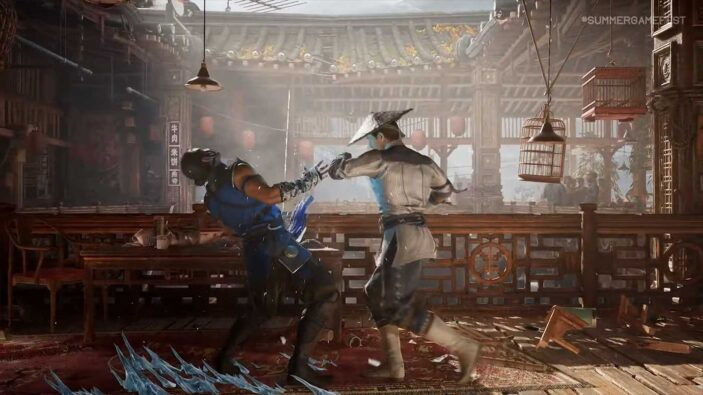
I consider myself a casual fighting game fan. But for one reason or another, I find myself drawn to each and every Mortal Kombat iteration. Is it the gore? The unique and iconic characters? The wacky stories and alternate modes? It might just be all of them. Mortal Kombat 1 decides to reset the timeline and take a step back into the origins of both its lore and characters, all with a fun and unique twist.
But by introducing the Kameo system and reinforcing the same, polished gameplay you know and love, Mortal Kombat 1 pushes through its minor flaws to dish out one of the best entries the long-running franchise has ever seen.
Round 1… FIGHT!
Throughout its various solo and multiplayer modes, Mortal Kombat 1 delivers some of the most robust combat mechanics to date, packed with responsive controls and fluid animations. Even so, the introduction of the Kameo system has only deepened each encounter, as players can now call upon allies to help with up to three attacks that can even be used within combos.
While extra time with this system has certainly helped us master its nuances to gain the upper hand, our initial impressions from our Mortal Kombat 1 preview still ring true here:
“Familiar gameplay aside, the Kameo Character system stands as one of the newest additions to Mortal Kombat 1. At any time during a fight, players can take advantage of their Kameo Character by tapping R1 or the right bumper, to jump into the chaos and unleash an attack. While their attacks do rely on a meter of sorts that cools down when used and slowly recharges as you deal and take damage, the amount of flexibility this creates is admittedly surprising. Their moves feel incredibly natural and any characters seem to pair seamlessly with a wide range of fighters. They also dish out a range of moves depending on your fighter’s position and stance, meaning you’ll rarely be bringing them in to spam that same attack or strategy.”

Beyond this new and intuitive system and 15 Kameo characters to choose from, players are still treated to an extensive roster of 23 primary characters, each of whom acts in specific ways with each of those Kameo characters. Given the game’s visual polish and solid 60fps performance, it’s impressive to see just how smooth and seamless these interactions look at a moment’s notice.
Thankfully, Mortal Kombat 1 is as brutal as it gets, thanks to some extremely polished character models and environments. We reviewed this on the PlayStation 5, and can safely say that the next-gen hardware brings these characters to life in a whole new way. While I’m far from the squirmish type, even I winced in pain when I ripped an opponent’s spine out from their back, or smashed their face into the Hollywood Walk of Fame so hard, that it fell off.
Slaughtering Solo
Mortal Kombat 1 serves up a variety of ways to play across various solo and multiplayer modes. The story mode takes a fresh approach, rebooting the events of the Mortal Kombat franchise with some fun twists on fan-favourite characters. The story is roughly the same as it always was; Earthrealm is under threat and a wise leader must track down and recruit a number of talented fighters to protect the realm from those who wish to overtake it.
Without spoiling the narrative, it is those twists on the familiar formula that help this 7-8 hour story along with a blistering ace and even some witty writing. For example, Liu Kang is now portrayed as the all-powerful God-like figure that Raiden once was, while characters like Shang Tsung are given some additional backstory in an attempt to justify their evil origins. The narrative is well-directed and rarely wastes a precious second, instead taking players on a journey centred around a number of chapters in which a handful of characters like Johnny Cage, Kung Lao and Sub Zero are all given time to shine.

While some of the voice performances are a little awkward at times with over-the-top deliveries, they in no way detract from the pure, unfiltered fun that this mode is having. It’s simply the highlight of the single-player modes and a bright new direction for the franchise.
The new Invasion mode intertwines various RPG and board game elements to deliver an alternative single-player mode centred around changing seasons and updated content. But for as much as this mode is trying to do, it simply feels a little muddy and unfocused. Players will navigate a game board that is modelled after a particular location like Johnny Cage’s mansion for example, where each space on the board, usually requires you to defeat a particular enemy in order to gain access to new areas.
Most enemies are also outfitted with certain modifiers, which alter things like their movement speed and attack power, but these modifiers rarely pose a solid challenge. Along the way, you’ll also take part in minigames like the iconic Test Your Might, which is always good fun. As a result, fighters can unlock a number of talismans, which can be upgraded to give your fighter the upper hand. The only issue here is that it’s all laid out within a clunky table, that’s more confusing than it needs to be. While these talismans give you statistical boosts, they usually hamper something else as a result, making their usefulness a delicate game of choice and rewarding you as you stick with a particular fighter.
For a mode that has so much going on at such a consistent pace, it’s delivered to you in a rather repetitive way, that loses its flavour within a couple of hours. I certainly recommend jumping into it for a test run, but I feel as though this mode suffers from its indecisiveness.

The remaining Towers mode feels untouched but in the best possible way. With a number of towers to choose from based on the number of opponents, players can use this mode to come to grips with character combos and discover new moves like Fatalities and Brutalities, with the ability to choose between various difficulty levels. It’s a mode we’ve all played before, but one that I’m glad has been included for the sake of variety.
Multiplayer Madness
While I respect Mortal Kombat 1 for its variety of single-player offerings, I also respect it for its traditional approach to multiplayer. Local, online and Tournament multiplayer modes allow you to take on your friends next to you on the couch, or halfway across the world online. Players can take part in both Ranked and Kasual matches online against others, or set up a private match with each other.
In Kasual versus, players can also join the King of the Hill mode, which allows 8 players to stand by and watch two fighters duke it out, with the winner staying on to take on the next spectator. It’s a fun mode that’s predicated on giving the winner a number of Respect Points, to see who comes out on top.
Kombat League includes ranked matches, where players can take on others online to climb the competitive ladder with points, which determine your rank from Apprentice to Elder God. It’s here that you can earn new and exclusive rewards like Kredits, clothing and profile banners and backgrounds. While I find that I’m always getting destroyed here, I appreciate the incentive to seek out the challenge to unlock those goodies in the first place.
Final Thoughts
Mortal Kombat 1 offers up some of the strongest combat mechanics to date, made fresh by the introduction of the Kameo system and rollercoaster narrative. While the Invasion mode lets it down in places, there’s still plenty to love and do through a selection of remaining single and multiplayer modes. It also looks as good as ever, taking advantage of next-gen hardware. While fans of the franchise should return for another ride, this might be the perfect time for newcomers to learn what Mortal Kombat is all about.
FOUR STARS (OUT OF FIVE)
Highlights: Incredible gameplay; Fun Kameo system; Engaging narrative; Multiple ways to play online
Lowlights: Disappointing Invasions mode
Developer: NetherRealm Studios, Shiver Entertainment, QLOC, Saber Interactive Inc.
Publisher: Warner Bros. Games
Platforms: PlayStation 5, Xbox Series X/S, Nintendo Switch
Available: Now
Review conducted on PlayStation 5 with a code provided by the publisher.
